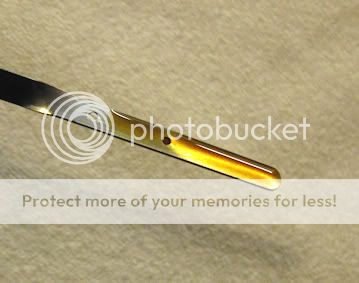That is not phase separation nor is it scientifically rigorous. You added a substance which which was so polar that it never was dissolved in the organic layer to form one phase and then later separate. I gave you a chance, but you still never mentioned that you will get a phase separation (organic vs. aqueous) once there is enough moisture to cause saturation. Once the more dense and polar aqueous layer forms (not just the water, but water PLUS ALL THE ETHANOL), it will indeed form on the bottom of the fuel tank. Guess where the fuel take up is likely to be in these small engines--yep, in the bottom of the tank taking in the aqueous layer first. DISASTER. Also, once the temperature drops, saturation and the resultant phase separation of ALL THE ETHANOL out of the gasoline is stimulated by an even much lower concentration of water.
You also never mentioned anything about degradation, cracking, and stiffening of rubber and other polymers in the system--fuel lines, carburetor diaphragms, and other components.
With all due respect, you sound like you have an interest in promoting ethanol and ethanol products. There are many like you in the "Midwest." In the interest of full disclosure, please tell us about your connections, directly or indirectly, to ethanol producers including whether you are in an ethanol producing state that has a significant lobby in Congress.
We're both saying the same thing, I think ... if not, clarify and I can show ya where you're wrong.

The fact remains:
pure gasoline + any water = phase separation, plugged carb, possibly dead engine
ethanol/gas blend + some water = solubilized water burned harmlessly in the engine.
I'm not saying you can't dump in a bucket of water and get the ethanol to separate, but for any nominal amount likely to accumulate under normal circumstances, assuming you actually put the gas cap back on, it is no issue.
Seals - yes, leather, natural rubber, latex of the 50's, 60's, 70's-ish vintage can have issues with ethanol. But really, the formulation of "gasoline" is so much different than it used to be, those materials would probably have issues with the modern stuff regardless.
Anything with modern materials... say the last 25-30 years is generally fine. Though standard disclaimer here...what usually happens is 10 or 15 year old parts wear out and suddenly it's an 'ethanol issue' ... we somewhat loose track of the fact 15 years is quite a long time for a part to be exposed to gasoline as well. Go look at a cheapo bottle of vodka...plastic, and it's not exactly breaking down due to the alcohol. Surely high end saw manufacturers can use materials as least as good as a disposable plastic bottle.
Regarding disclosure - no monetary interest / gain from ethanol what so ever. If we're going on location - I see "Western PA", so maybe I struck and oil/gas/coal nerve? If so, sorry about that - I'm not saying don't use gas, just that if it has a bit of ethanol, it's not going to make ya go blind, grow hair on your back and cause all the other nasty stuff usually attributed to it.




